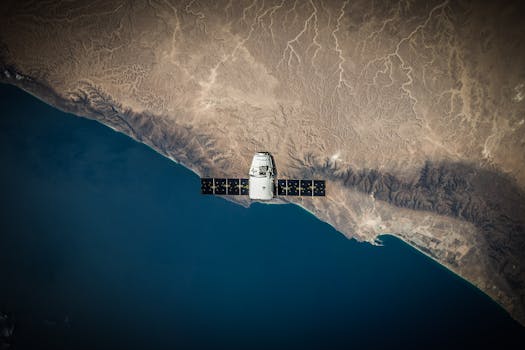The Future of Satellites: Revolutionizing Global Connectivity and Exploration

The Future of Satellites: Revolutionizing Global Connectivity and Exploration
The future of satellites holds much promise, from improving global connectivity to enabling deeper space exploration. With advancements in technology and investment from both public and private sectors, the potential applications of satellites are vast and varied. The focus keyword, Future of Satellites, is at the forefront of this discussion, as we delve into the exciting developments and innovations that are shaping the industry.
Introduction to the Future of Satellites
Satellites have been a cornerstone of modern technology since the launch of Sputnik in 1957. Initially used for military and scientific purposes, satellites have evolved to play a crucial role in various aspects of our daily lives, including communication, navigation, weather forecasting, and Earth observation. The future of satellites is expected to be even more transformative, with the potential to bridge the digital divide, enhance global connectivity, and facilitate space exploration.
The development of satellite technology has been rapid, with significant advancements in recent years. The launch of satellite constellations, such as those by OneWeb and SpaceX, aims to provide global internet coverage, reaching remote and underserved areas. These constellations consist of hundreds or even thousands of small satellites, working together to create a network of interconnected nodes. This promises to revolutionize the way we communicate, access information, and conduct business.
Advancements in Satellite Technology
Several key advancements are driving the future of satellites. One significant development is the use of phased arrays, which enable satellites to steer and shape their beams electronically, allowing for more efficient and flexible communication. Another important innovation is the adoption of high-throughput satellites (HTS), which can transmit data at much faster rates than traditional satellites. HTS satellites use a combination of spot beams and broad beams to maximize bandwidth and minimize interference.
Additionally, the integration of artificial intelligence (AI) and machine learning (ML) into satellite systems is becoming increasingly prevalent. AI and ML can be used to optimize satellite operations, predict and prevent failures, and enhance data analysis. For instance, AI-powered algorithms can be used to identify patterns in satellite imagery, helping to detect natural disasters, track climate change, or monitor crop health.
Applications of Satellites in the Future
The future of satellites will have a profound impact on various industries and aspects of our lives. One of the most significant applications will be in global connectivity. Satellite constellations will provide internet access to remote and underserved areas, bridging the digital divide and enabling communities to access information, education, and economic opportunities. This, in turn, will have a positive impact on economic development, as businesses and entrepreneurs will be able to connect with global markets and access new customers.
Satellites will also play a critical role in space exploration. As space agencies and private companies plan to return humans to the Moon and send missions to Mars, satellites will be used to provide communication, navigation, and scientific research. Satellites can be used to study the environment, geology, and potential resources of celestial bodies, helping to inform mission planning and ensure the success of future space missions.
Challenges and Opportunities in the Future of Satellites
While the future of satellites holds much promise, there are also challenges and opportunities that need to be addressed. One of the main concerns is the mitigation of space debris, as the increasing number of satellites in orbit poses a risk to operational satellites and the environment. The development of sustainable and responsible practices for satellite operations and disposal is essential to ensuring the long-term health of the space environment.
Another challenge is the need for regulatory frameworks that can keep pace with the rapid evolution of satellite technology. Governments and international organizations must work together to establish clear guidelines and standards for satellite operations, spectrum management, and data privacy. This will help to promote innovation, ensure public safety, and protect the environment.
In conclusion, the future of satellites is exciting and full of potential. As technology continues to advance and investment pours in, we can expect to see significant improvements in global connectivity, space exploration, and various other applications. The focus keyword, Future of Satellites, is at the heart of this discussion, and it will be fascinating to see how the industry evolves in the coming years.

